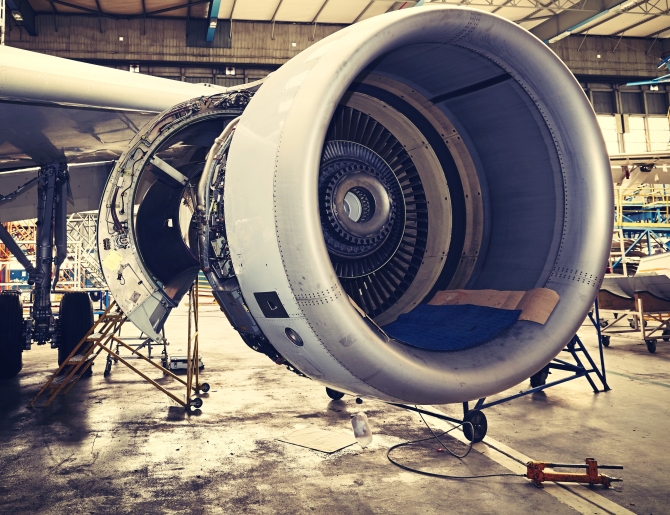Revolutionising transportation: The role of aluminium in automotive and aerospace Industries
Contributed by: Team AL Circle
2024-05-25
The global transportation industry is estimated to reach USD 8.9 trillion by 2030, growing at a CAGR of 3.6%. The predicted growth indicates constant innovation and new opportunities for the industry. One of the key trends in the transportation industry is lightweight, and aluminium is the perfect solution for revolutionising it in the coming times. The automotive and aerospace sectors utilise aluminium to make more resilient, sturdy, modern vehicles, and aircraft.
Why is lightweight emerging as a prominent trend in the transportation sector?
Before understanding how aluminium is revolutionising the automotive and aerospace industries, it is important to know why lightweight is an emerging trend in these sectors. First and foremost, lightweight reduces the vehicle or aircraft's weight, increasing its structural efficiency. However, there is more than one benefit of lightweight. Today, sustainability is of pivotal importance among all industries. Lightweighting allows the transportation sector to achieve fuel efficiency and minimise environmental impact. Reduced weight implies less need for fuel, therefore diminishing pollution and preserving natural resources like fossil fuels. Lightweighting is also opening new avenues for modern transportation, such as electric vehicles, which are better for the environment.
Giga casting: The hottest trend in the automotive sector
One of the most significant trends in the automotive sector related to aluminium is giga casting, a trend that was first pioneered by Tesla. But what exactly is giga casting? It involves the use of gigantic, high-pressure aluminium die-casting machines to produce the chassis or bodies-in-white in a single piece. This innovative approach has been adopted by major motor corporations such as Toyota, Volvo, General Motors, and Hyundai, who refer to these large-scale castings as giga castings or mega castings.
The trend of giga castings is not limited to the West. It is also gaining traction in mainland China, a country that is poised to become a global leader in electric vehicle production. A 2023 report predicts that by 2030, China will be producing 19 million units of electric vehicles annually. Chinese EV producers are also significantly pushing into the global giga-casting market. This move will allow them to incorporate more aluminium body parts into their EVs, making them lightweight and affordable. Notable examples include the NIO ET5 and Geely Zeekr 009, which feature single-piece aluminium giga-casting rear floors, and Xpeng's G6, which boasts a single-piece front compartment and single-piece rear floors.
Looking beyond giga castings, 2024 is set to be a significant year for aluminium in the automotive industry. More and more automakers are incorporating the metal into their latest vehicle models. For instance, Ford's popular F-150 truck has been using aluminium since 2015, and the 2024 F-150 and heavy-duty Super Duty lineup will continue to use aluminium in the body panels to enhance fuel efficiency. Audi is a leader in using ASF (aluminium space frames), a trend that is expected to continue with the 2024 A8 model. Various Jaguar and Land Rover models, including the 2024 Jaguar XE, Range Rover, and Range Rover Sport, will feature aluminium structural components such as suspensions and body panels.
Lightweight aluminium flying across the sky
Apart from the automobile industry, aluminium has an age-old relationship with the aerospace sector. Apparently, the Wright Brothers used aluminium parts in the first aircraft as well. Since aluminium and its alloys have been used in various aircraft parts, each alloy meets a specific requirement. The 2xxx and 7xxx series of alloys are the most commonly used aluminium alloy series in the aerospace industry.
The aerospace industry is looking at biomimicry to attain lightweight and sustainable designs. Nature's patterns and creative solutions inspire designs and answer complex questions in biomimicry. Aluminium-lithium and aluminium-scandium alloys will be crucial components for lightweighting, and as the trend of lightweighting continues to rise, so will the demand for such alloys. These alloys are a promising material for improving the strength-to-weight ratio of the aircraft.
The path to carbonisation in the aluminium industry passes through alternative energy sources. Fossil fuel and electric grids are heavy polluters. Moreover, fossil fuel conservation is also a major ecological challenge of the present day. Major players in the aluminium production market, such as Rio Tinto, are conducting a feasibility study with ARENA (Australian Renewable Energy Agency) worth USD 1.2 million to replace natural gas with clean hydrogen as an energy source in one of its aluminium refineries. Similarly, other energy sources such as wind and solar power will also make their way into aluminium refineries through continuous process innovation.
In the end
With the rise of lightweight, the aluminium industry has also entered a new era. From giga casting to new alloy formation, innovation has taken the front seat for the transportation industry as well as the aluminium industry. Aluminium facilitates structural optimisation, electrification, and sustainability. Needless to say, the aluminium sector and its key actors will bask in the glory of lightweight trends.
Categories
Raw Materials
Scrap
Consumables
Primary Aluminium
Secondary Aluminium
Equipment
Technology
Downstream Products
Finished Products
Utilities
Services
Others
Recent Blogs
Subscribe to newsletter
Connect with us











